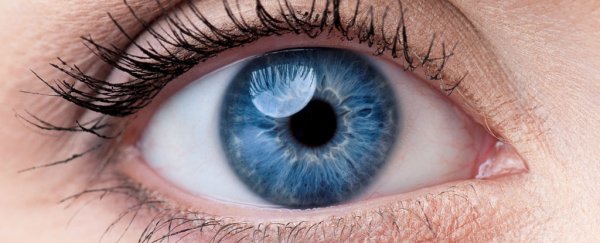Japanese scientists have reported the first successful skin-to-eye stem cell transplant in humans, where stem cells derived from a patient's skin were transplanted into her eye to partially restore lost vision.
The patient, a 70-year-old woman diagnosed with age-related macular degeneration (AMD) – the leading cause of vision impairment in older people – received the experimental treatment back in 2014 as part of a pilot study. Now, closing in on two years after the transplant took place, the scientists are sharing the results.
The researchers took a small piece of skin from her arm (4 mm in diameter) and modified its cells, effectively reprogramming them into induced pluripotent stem cells ( iPSC).
Pluripotent stem cells have the ability to differentiate into almost any type of tissue within the body, which is why skin cells taken from an arm can be repurposed into retinal tissue.
Once the cells were coaxed to develop into retinal pigment epithelium (RPE), they were cultured in the lab to grow into an ultra-thin sheet, which was then transplanted behind the retina of the patient.
"I am very pleased that there were no complications with the transplant surgery," said project leader Masayo Takahashi from the Riken Centre for Developmental Biology in 2014. "However, this is only the first step for use of iPSC in regenerative medicine. I have renewed my resolve to continue forging ahead until this treatment becomes available to many patients."
While it's definitely still early days for this experimental procedure, the signs so far are promising.
The team held off on reporting their results until now to monitor the patient's progress and gauge how successfully the modified cells lasted, but they've just reported that the transplanted cells survived without any adverse events for over a year, resulting in slightly improved vision for the patient.
"The transplanted RPE sheet survived well without any findings [or] indication of immune rejections nor adverse unexpected proliferation for one and a half years, achieving our primary purpose of this pilot study," the team said in a statement this week.
"I am glad I received the treatment," the patient told The Japan Times last year. "I feel my eyesight has brightened and widened."
While it's not a complete restoration of the patient's vision, the study shows a significant step forward in the use of induced pluripotent stem cells – which scientists think might be used to treat a range of illnesses, such as Parkinson's and Alzheimer's disease, not just vision problems.
A number of other studies are also showing positive results in restoring sight with stem cell treatments. Earlier in the year, researchers in China and the US were able to improve the vision of babies with cataracts by manipulating protein levels in stem cells.
Even more remarkably, a woman in Baltimore who was blind for more than five years had some of her vision restored after stem cells were extracted from her bone marrow and injected into her eyes. While many questions remain about that particular treatment, there's no denying that stem cell research is a hugely exciting field of study.
The findings were presented at the 2016 annual meeting of the Association for Research in Vision and Ophthalmology (ARVO) in Seattle.
